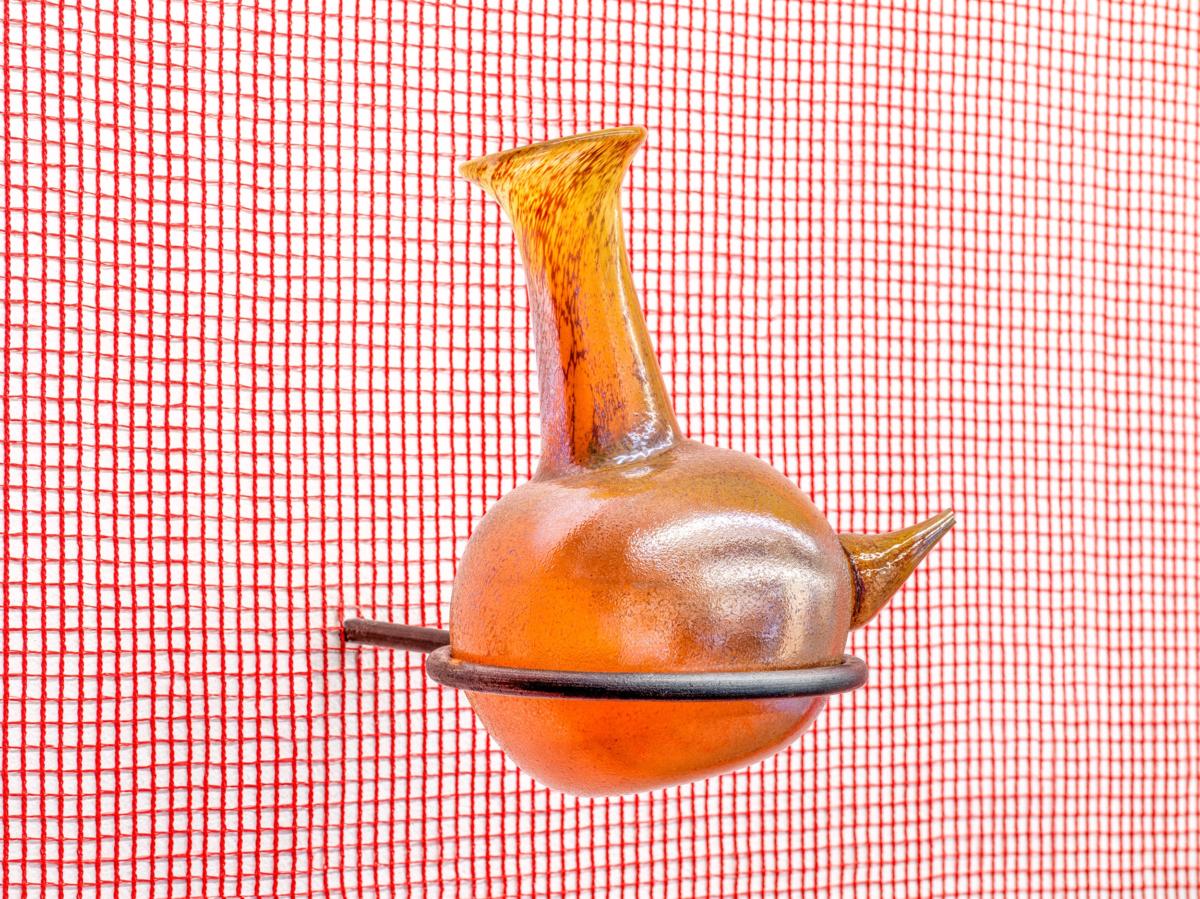
To Lukáš
You often stress that you are primarily a performance artist, although apparently you do like to see the fleeting moments somewhat materializing, while the exhibition environment either anticipates or prolongs the existence of performative events. Everything is arranged to be touched and manipulated with your particular sense for intensity and tension; all the surfaces and realities being there for one and only purpose, to create an exact negative space for the body in every possible position and scenario. The audience, the crew – your crew – is drawn in on various levels, invited to interact and evolve, but also carefully instructed about what would be the desirable form and outcome of their moves. You say there is a lot of space for fluidity and moments of authenticity in your actions, yet you would never allow for imperfection, or incompletion. Although the world to you is a rather abstracted entity lacking solid points of reference, I feel you still expect it to be a precise response to the shape of your thoughts. It cannot be just a contour; it needs to be an answer. The right answer, of course. Even if “right” is just a momentary constellation of disparate elements in an unstable space and time.
Funnily enough, when I first met you at a project space I still run in Prague, you were someone else’s crew, serving glow-in-the-dark drinks in a latex outfit, as part of a rather decadent performative dinner party created by an artist I have invited. You seemed keen and you were really young. That was years ago. You still are fairly young for the stage and scope of the career you catapulted yourself to recently. An artist, curator, model, choreographer, stylist, writer. Manifesta, Futura, Brussels Gallery Weekend, Gucci, Schinkel Pavillon, Prague Fashion Week – the list could go on with a few more hits. It’s not so hard to trace down what got you there. You work with an almost unbearable earnestness. You want it all, immediately is already too late. You fight for your ideal of what it could be to be an artist – to be well taken care of, adequately paid, well respected and given satisfactory attention. Sometimes you do so without much empathy for the others (except for the performers whom you treat as members of a family you have chosen), without a sense of reality. Not without honesty though. One could suggest that you might have gotten too far too early, and it’s not easy for you to handle it. But that would be simplifying.
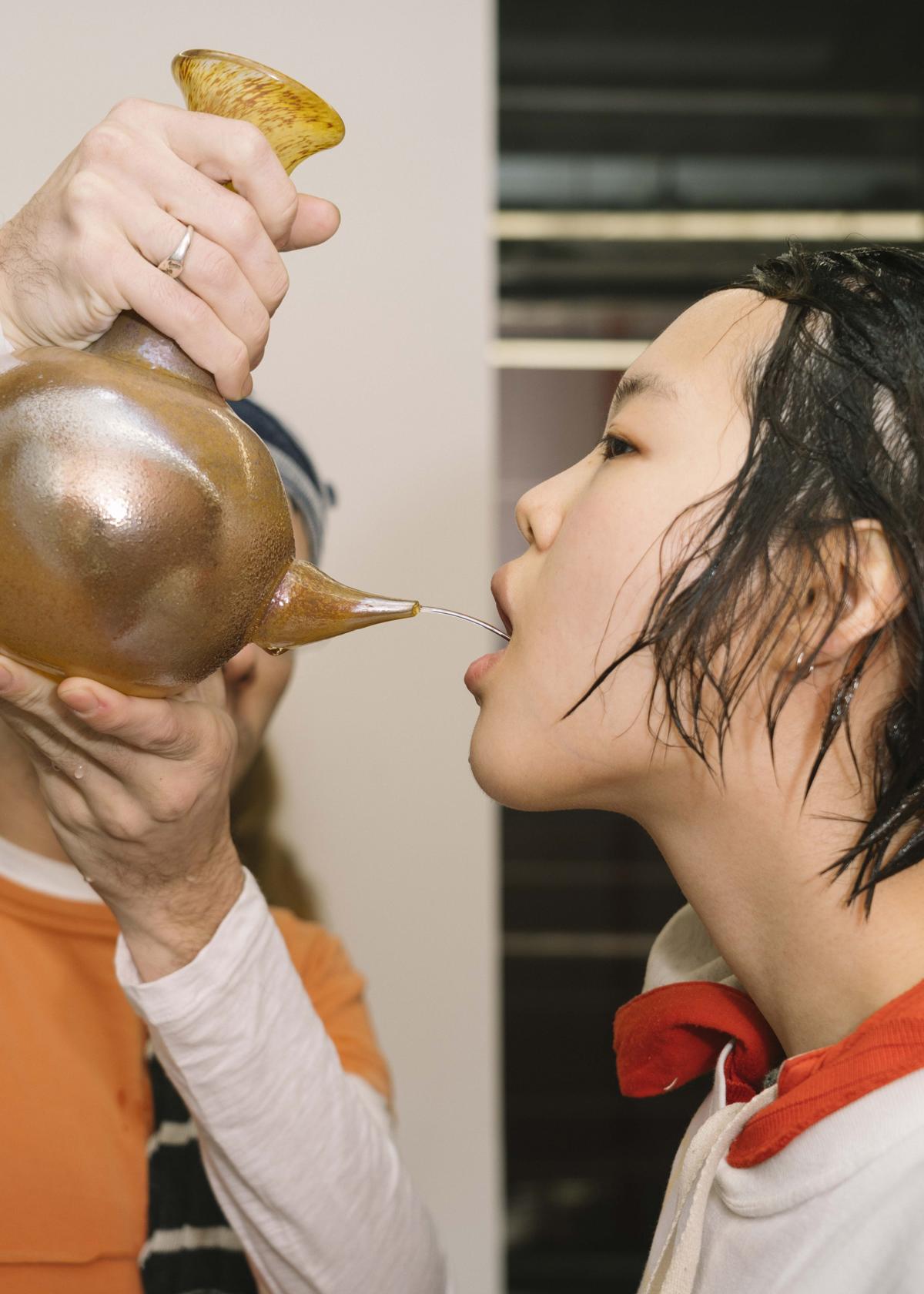
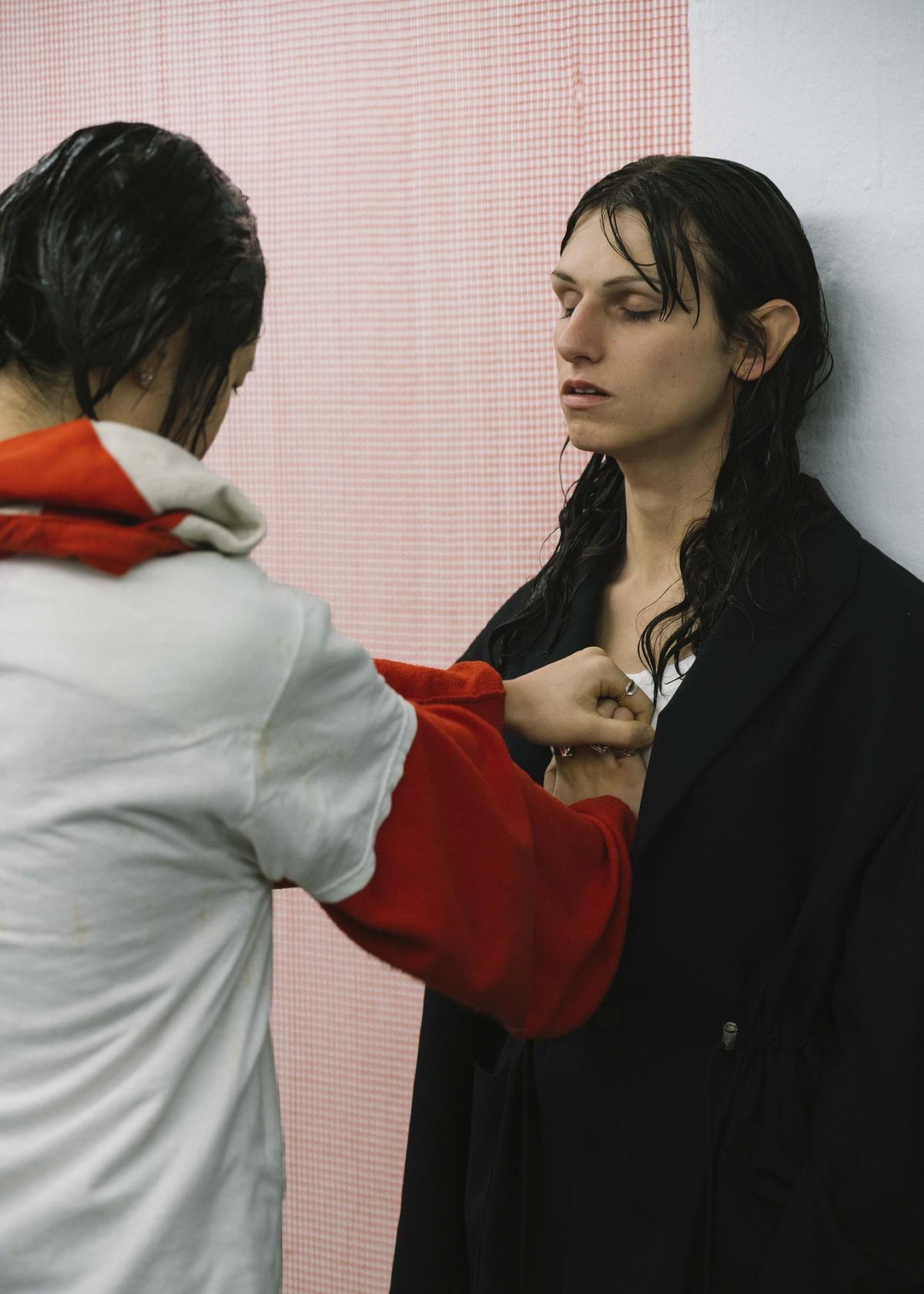
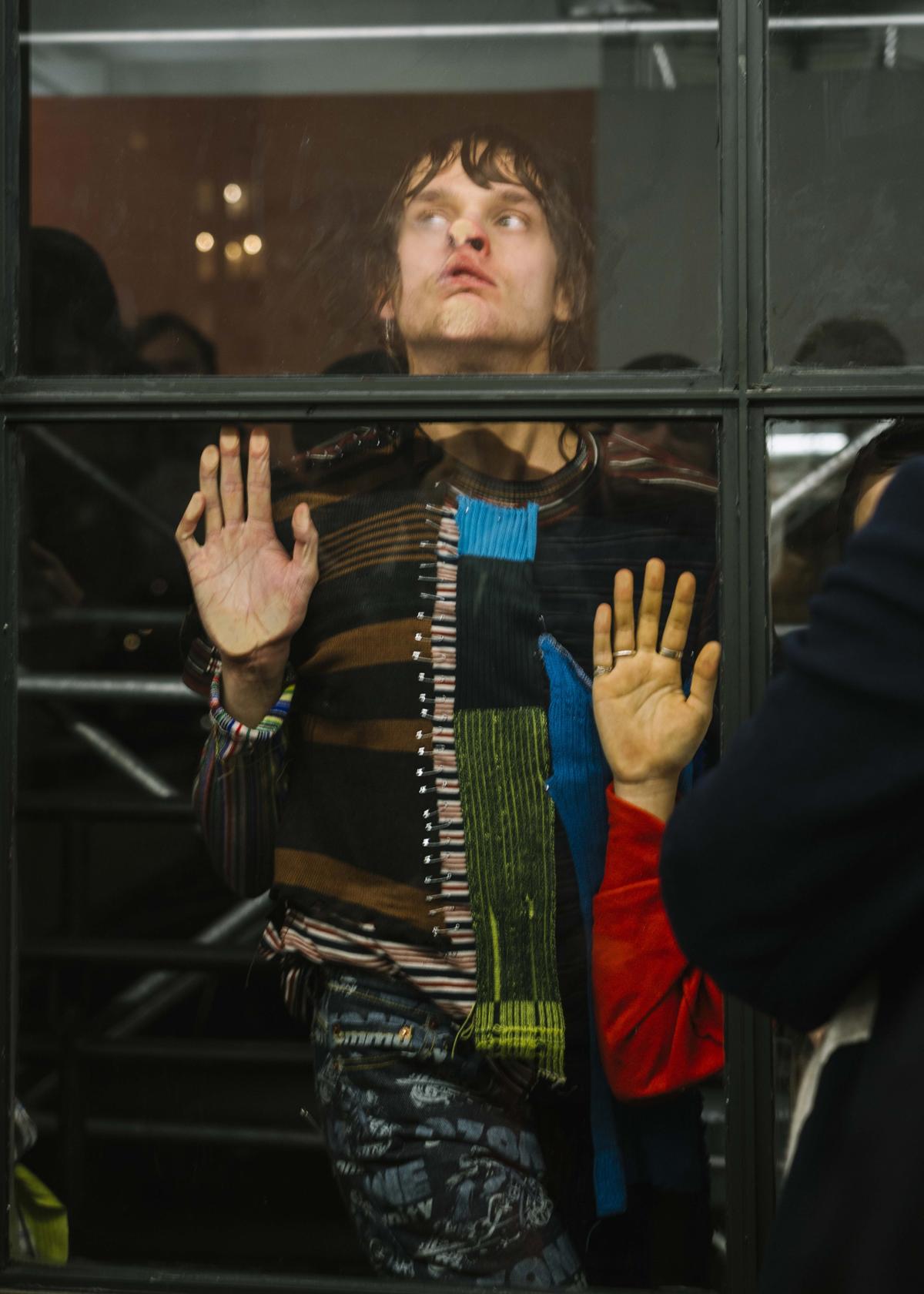


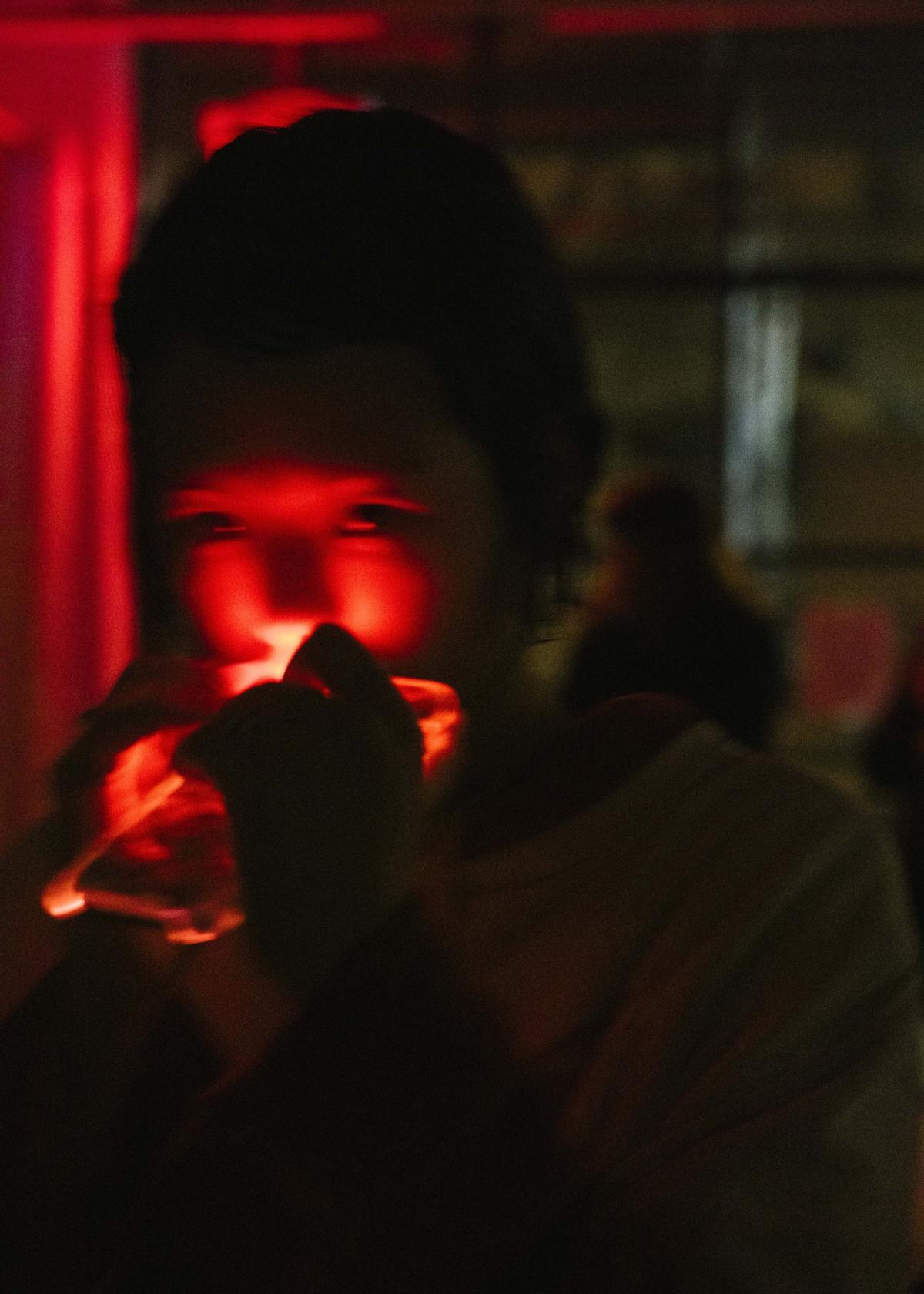
This text perhaps wouldn’t need to be so personal if the exhibition you are presenting at Art in General wasn’t a kind of a self-portrait. You’ve suffered from atopic skin condition since you were a kid. As I didn’t experience it myself, I know I cannot fully relate, although I accompanied a close friend through dozens of scratchy days and nights, better and worse periods, and related mood drops.
At the beginning of the performance you made last year for the Jindřich Chalupecký Award, I must admit I wasn’t so drawn in. It was crowded at the National Gallery, and your actants, dressed in medieval-inspired attires, were engaging for slightly too long in the choreographed activities, pressing their faces and body parts onto glass surfaces of the institution in an unnerving tableau vivant, interacting with exhibition objects and with each other in slow motion, on the edge of being hypnotizing and overemotional. An hour or more into the action, the group moved together with the spectators to the raw concrete premises of the large basement theatre hall in the same building. In the dark, in the smoke, everything got thicker, stickier, heavier.
Bodies slathered with petroleum jelly, holding their weight and holding their breath, felt close to agony or ecstasy. The audience was spread in between them, invited inside ritualistic circles, smelling the performers’ sweat and custom-made palette of perfumes. It seemed that the event was slowly dissolving, with your performers shining flickering lights from their phones through their reddened ears, when a high voice rose from the darkness, singing the “Song to the Moon” – a famous aria from Antonín Dvořák’s opera Rusalka. It took me a moment to realize that it was you singing. And I was moved. It was a voice of someone both strong and fragile, using a more than a hundred-year-old motif to express something so contemporary, personal and shared. Anxiety and hope, sensitivity and restlessness. Apparently I was not the only one who was touched by this. Subsequently, you got the invitation from Laurel Ptak and Bonaventure Soh Bejeng Ndikung to make a project for the venues they represent. Bona was texting me about it before the performance was even over.
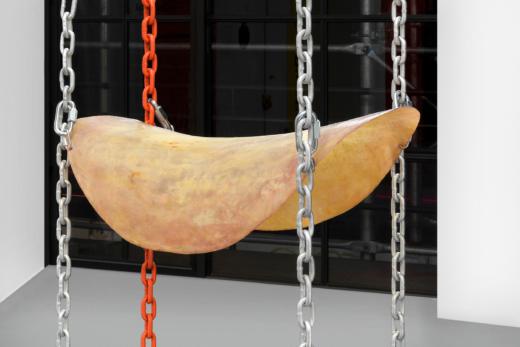
Lukas Hofmann, ‘Saddle’,
polyester, gelcoat, fiber glass, solvent dye, metal, plastilina, 2019, detail, photo: Dario Lasagni
This text perhaps wouldn’t need to be so personal if the exhibition you are presenting at Art in General wasn’t a kind of a self-portrait. You’ve suffered from atopic skin condition since you were a kid. As I didn’t experience it myself, I know I cannot fully relate, although I accompanied a close friend through dozens of scratchy days and nights, better and worse periods, and related mood drops. You say you feel like it takes so much effort to just aggressively keep it together, to hold this pile of future dust in one place, not to fall apart. You made me read The Itch by Don DeLillo, as something that ties to your project. I copied a quote I thought I could use for the curatorial text, and would still like to paste it here, although it doesn’t really fit in the format I finally chose to write the text in. It goes:
He began to think of the itch as sense data from the exterior, caused by some outlying substance, unanalyzable, the air in the room or on the street or in the atmosphere itself, a corruption of the planetary environment. He thought of this but did not believe it. It was semi-science fiction. But it was also a form of comfort during those long periods of unrest when he was stretched and then curled and then belly down in bed, a raw body in cotton pajamas, awash in creams and lotions, trying not to scratch or rub.
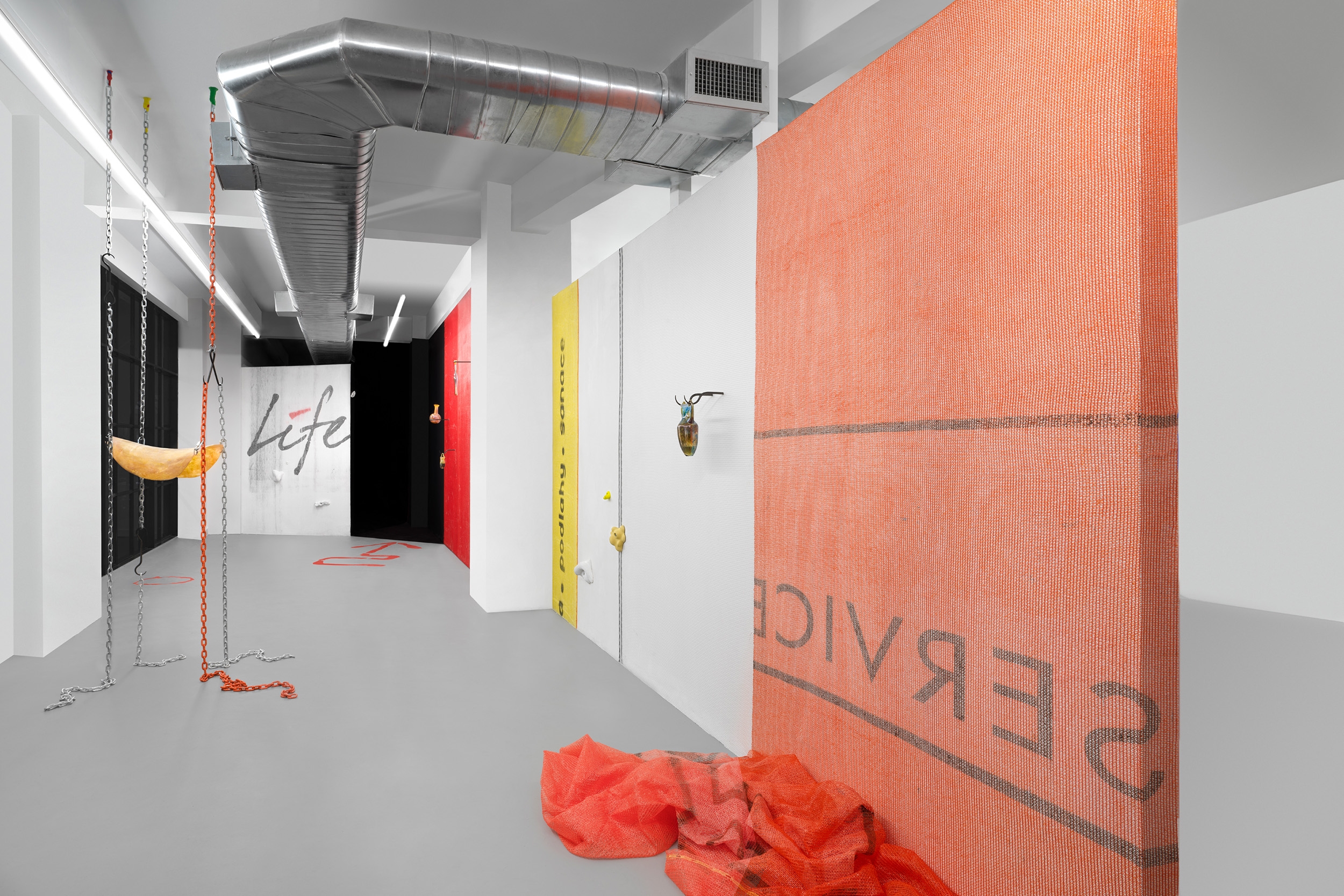
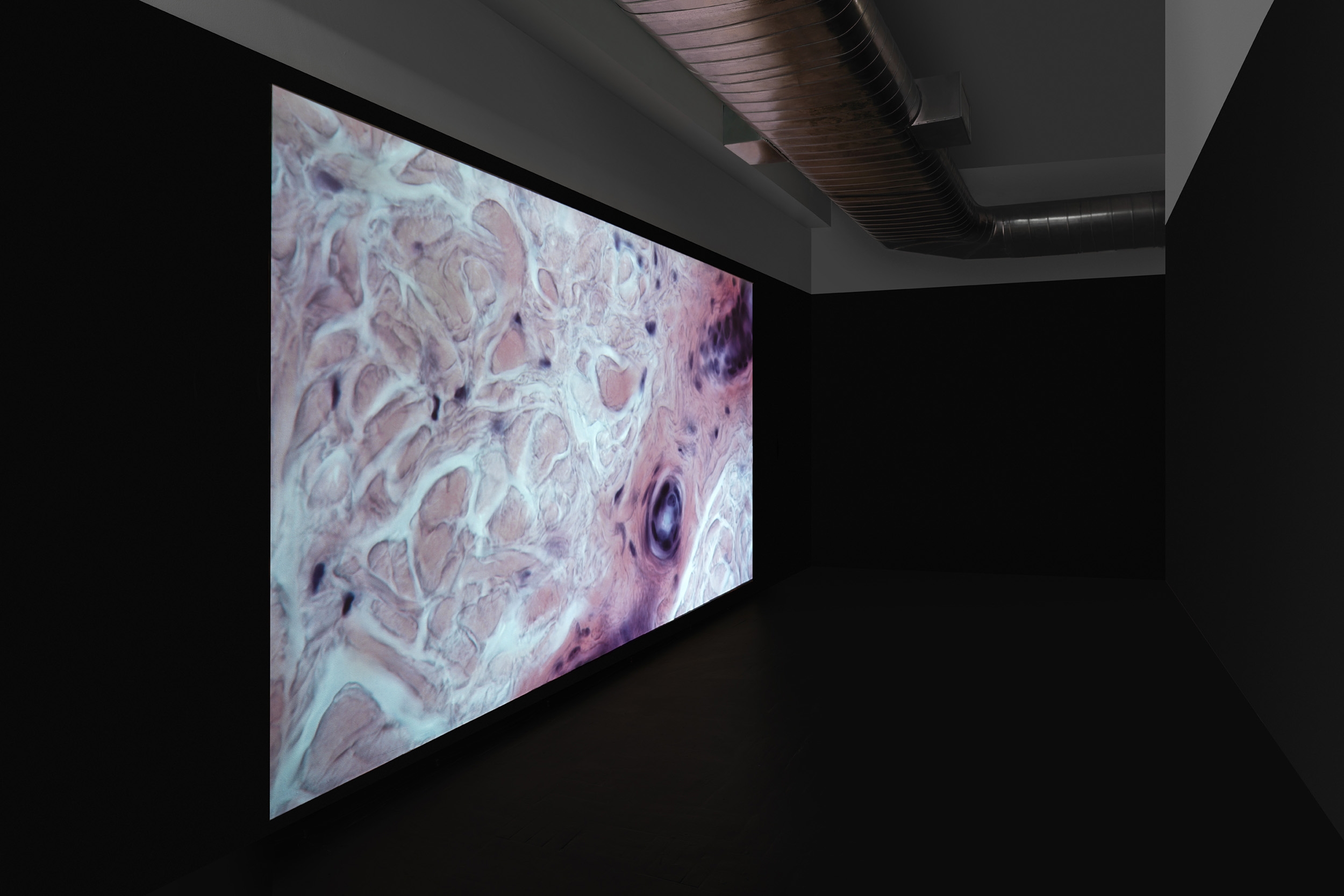

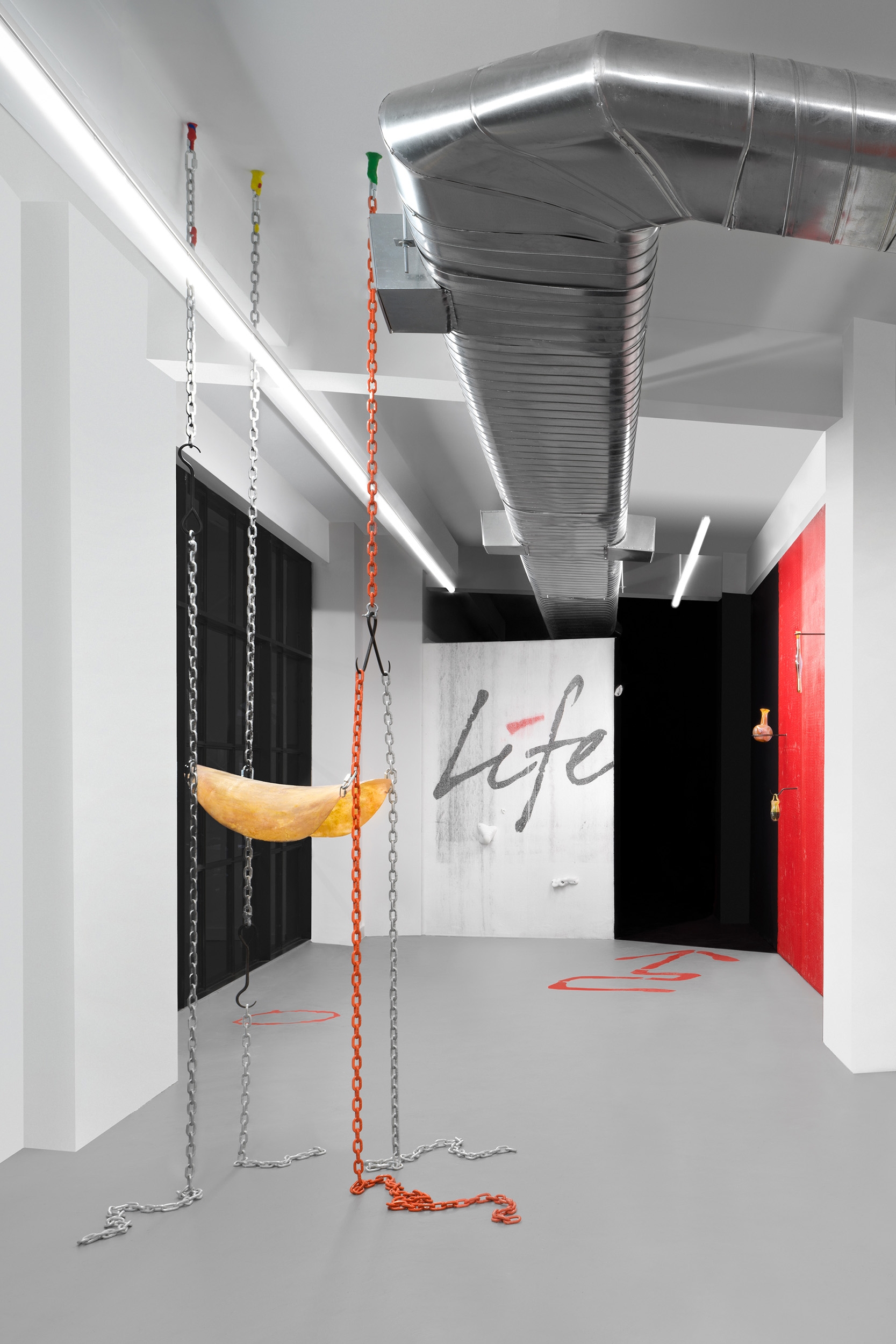

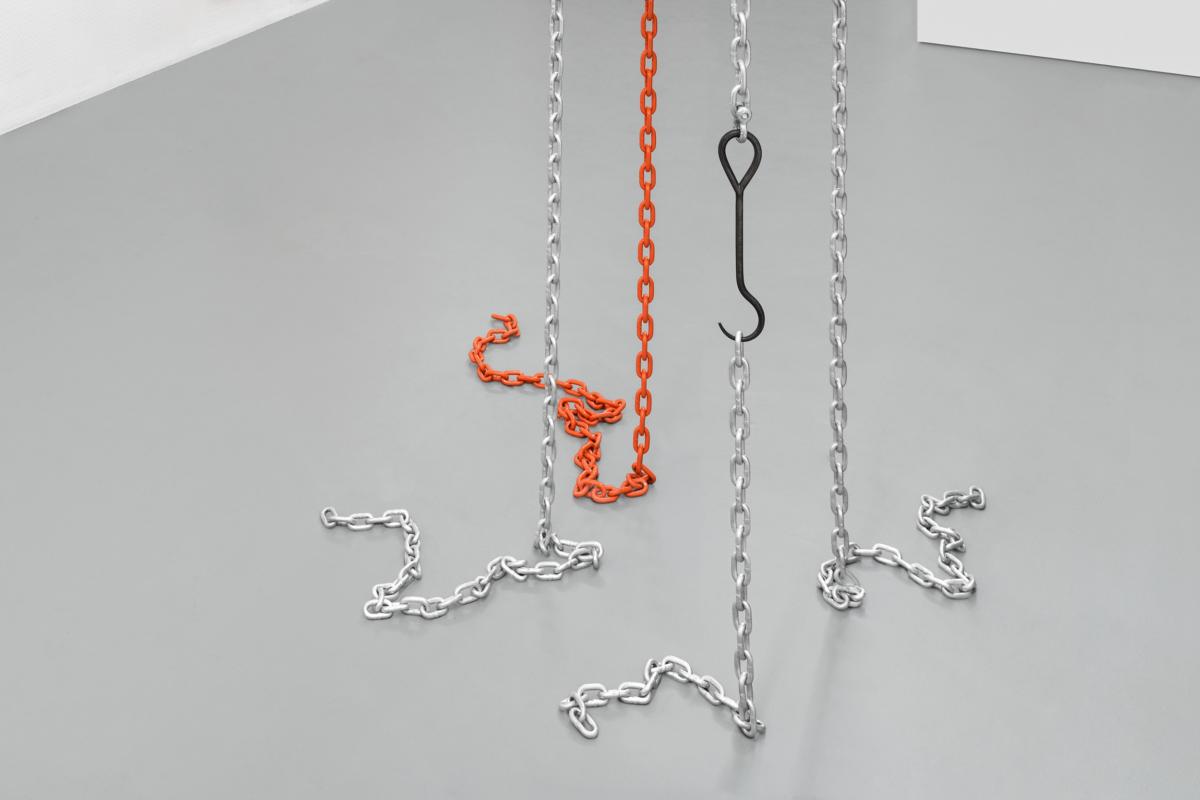
Two powerful potions are being used in this story – the water of life and the water of death. As their names suggest, they are able to heal mortal wounds and resuscitate the dead. After using them, one would become even younger and more beautiful than before his or her injury or passing.
This sounds a lot like you, the more likeable you. It might explain some of the restlessness, pushing, longing for relief that is present both in your art and your way of working. What is relief for you though? Is it success? Self-fulfillment? Do you ever itch during performances? Interestingly, DeLillo’s character stopped having the symptoms when a sexual encounter was about to happen. The body didn’t betray him in that moment. I thought your work represents similar tension between the itch and alleviation. It is always partly disturbing, and partly comforting.
Was it compassion, repulsion or attraction you felt at the tannery, where animal skin is being deprived of the rest of the once-alive being and turned into a commodity? Dead skin doesn’t itch anymore. I know it’s not solely the motif of violence, ethical boundaries or exploitation that made you connect those unnerving environments for the new video piece, but you probably cannot avoid others looking through this prism. Is it your personal battle with the skin, with your own immunity system, which you know works partly against you, that lay the grounds for this confrontation? Do you bite your audiences, leaving traces of your teeth on their wrists, in order to make them participate in your fight? Of course, it’s not just your own portrait of the artist as a young man that you are fighting for. The skin divides you from the rest of the world, but it is also the most intimate means through which you can connect. But you know you cannot bite people in the US, right?
There is a 1973 Czechoslovak TV fairy tale about a princess with golden hair falling in love with a “delivery boy”, who was supposed to bring her to his king. All of the kids, including you, were watching this in the post-communist Czech Republic and it’s still broadcasted as a family film every Christmas. Two powerful potions are being used in this story – the water of life and the water of death. As their names suggest, they are able to heal mortal wounds and resuscitate the dead. After using them, one would become even younger and more beautiful than before his or her injury or passing. When the vicious king gets hold of them exactly for that purpose, he forgets an important detail. He would need a companion to sprinkle the water of life on him after the water of death is applied – as the first step obviously paralyses the potion’s user and he cannot make the second step by himself. So as the story goes, the king dies and the princess with her lover takes over the kingdom. The derivatives of these potions have actually found their place in both alternative medicine and fancy cosmetics. You are developing your own take on them, and aiming to use them in the exhibition and the opening performance. I’m sure you would like to see them achieve the extreme. There is a thin boundary between healing and harming, and you know how to exercise it. Still you can be quite positive about always having someone around to pour the second potion for you, if necessary. As you are so engaging, the world won’t be just a passive contour to your performance. It will want to answer, perhaps even in the right way.
Karina Kottová
Imprint
| Artist | Lukas Hofmann |
| Exhibition | Skin Come Leather |
| Place / venue | Art in General, New York |
| Dates | 25 November 2019 – 31 January 2020 |
| Curated by | Karina Kottova |
| Photos | Dario Lasagni |
| Index | Art in General Karina Kottová Lukáš Hofmann |
